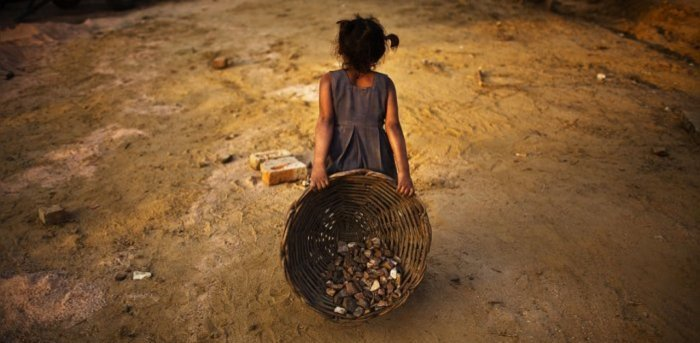
By Azra Bashir
OUR screens have been filled with distressing images of people from economically underprivileged sections suffering because of the pandemic, loss of job, the unprecedented lockdown and our general apathy towards them. The fallout of the migrant crisis, floods, cyclones and other challenges exposed people to different risks which had severe impacts because they were coupled with the threat of Covid-19.
Consequently, this year has been tough on everyone especially families from underprivileged backgrounds. This has in turn exposed people to more and more vulnerabilities. One such alarm has to be rung on the front of increasing risks to children especially through child labor.
One in ten children is laboring in the global economy today. Children don’t even get a chance to start school because of poverty pushing them into being trafficked, prostitution and manual labor. They are often separated from their parents. Children are often put in illegal sectors which do not have any income regulations. This encourages child labor as children are considered a cheap labor. These children are often also victims of physical, mental, and sexual violence.
In addition to denying Children the right to education, working at such a young age also exposes children to threats to life. They have a risk of being victims of crime and may in fact be led into it because of vulnerability. There also severe health risks associated with child labor. In the world’s poorest countries, around 1 in 4 children are engaged in child labor.
Worldwide 218 million children between 5 and 17 years are in employment. Among them, 152 million are victims of child labor; almost half of them, 73 million, work in hazardous child labor. Among 152 million children in child labor, 88 million are boys and 64 million are girls.
The pandemic has adversely impacted children as many have had to drop out of schools and work to make ends meet. Girls have been pushed further away from education because in a patriarchal society, their education is never considered as a necessity. With financial constraints, girl’s education maybe a far cry now, augmented by structural consequences of poverty.
The recent changes in labour laws in India are likely going to weaken laws that discourage child labor. With a view to boost the economy, states such as Gujarat, Punjab, Himachal Pradesh, Uttar Pradesh, Maharashtra, Rajasthan, Madhya Pradesh, Odisha, and Assam have amended the Factories Act, 1948 through an ordinance, to allow companies to extend a factory worker’s daily shift from eight to 12 hours per day. Most of these states also have a high burden of child and adolescent labourers. Though the recent changes do not affect child labour legislation per se, they may fuel an increase in demand for adolescent workers who are likely to be paid lower wages in hazardous and exploitative work conditions, due to their vulnerability and poorer bargaining power as compared to adults.
Parents do not always know the huge cost and negative consequences it has when they allow or even force children to work. They only look at the short term and let the child work because they need the money for food, clothes or housing. You can educate them that in the long term it is better that the child is educated, so they can have a better job. Also tell them that the child has the right not to be forced to work! Organize a debate evening in your community in which you can share information and let parents and children talk to each other about this problem.
Is a child in your class suddenly not coming to school anymore? Or does a friend tell you that he or she needs to work to earn money? Often there are people you can report this to: a local organization, social workers, and teachers. Research who can help you and report the case to them so they can take action.
- The author is a student at Islamic University of Science and Technology
Follow this link to join our WhatsApp group: Join Now
Be Part of Quality Journalism |
Quality journalism takes a lot of time, money and hard work to produce and despite all the hardships we still do it. Our reporters and editors are working overtime in Kashmir and beyond to cover what you care about, break big stories, and expose injustices that can change lives. Today more people are reading Kashmir Observer than ever, but only a handful are paying while advertising revenues are falling fast. |
| ACT NOW |
| MONTHLY | Rs 100 | |
| YEARLY | Rs 1000 | |
| LIFETIME | Rs 10000 | |













